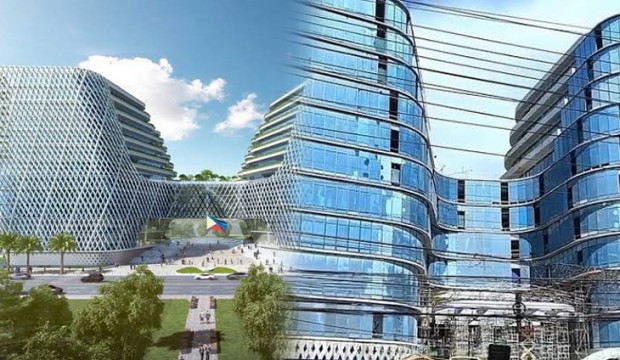Due to the obvious difference between the architectural plan and the actual structure, a senate building currently under construction in Taguig, Metro Manila, Philippines, is receiving criticism. Many people believe that this construction is nothing more than a waste of the money that the taxpayers have paid for.

(Photo : Bilyonaryo/Senate Building)
Criticism Over the Architectural Design of the Senate Building
The architectural plan of the skyscraper was quickly uncovered by users of social media platforms in the Philippines, who then compared it to recent photographs of the structure in the construction process.
As mentioned, an architecture degree is not required to observe that the Senate building's façade is not in accordance with expectations. The hexagonal pattern intended to be the design throughout the building is reportedly not present. According to some people, the design was a complete and utter waste of public resources and appeared to be nothing more than a garbage can.
On February 14, 2018, the Senate and the BCDA initiated a global competition to determine the location of the future building to house the Philippine Senate. With the intention of paving the way for the construction phase of this project, the BCDA encouraged technically qualified enterprises to participate in the design of the new Senate building. The iconic and unique style, building ability and efficiency, environmentally friendly design, utility, and security of the 'New Senate' building, also referred to as 'Bagong Senado' in Filipino, were the criteria under which it was to be evaluated.
Moreover, it has been decided that the new Senate Building will be located in the Navy Village, which is located in Fort Bonifacio, Taguig City. With an area of 18,320 sq. m., the land use is required by the British Columbia Design Association (BCDA) master development plan to have a minimum of 20% open space, with a central public space measuring 1,135 sq. m.
The BCDA ultimately decided that AECOM's winning design 'best embodies the honor, dignity, and legacy of this independent institution'. This decision was made from the forty entries that were ultimately narrowed down to five teams.
Also Read: Top 8 Best Construction Materials to Elevate Your Ceiling Design
Suspension of the Construction
During the flag ceremony on Monday, June 10, with the Senate members and employees in their present building in Pasay City, which is rented from the Government Service Insurance System, newly appointed Senate President Francis 'Chiz' Escudero announced that the development of the new Senate building in Fort Bonifacio, Taguig, would be put on hold. Accordingly, due to the ever-increasing costs of construction and the requirement for a comprehensive evaluation, the suspension was necessary.
On the other hand, following a discussion with Senator Alan Peter Cayetano, who currently serves as the committee chairperson on accounts, Escudero decided to suspend the individual. From an original budget of 8.9 billion pesos to a projected expenditure of 23.3 billion pesos, Cayetano brought attention to the significant increase in the project's expenses.
Cayetano's report also underlined issues regarding procurement delays and mistakes made by the project manager, the Department of Public Works and Highways (DPWH). These issues have contributed to project delays and cost overruns. During its inspections, the Senate Coordination Team discovered that the workmanship was of low quality and that the original conditions of reference were not adhered to.
However, as the new chair of the Senate committee on accounts, Escudero gave Cayetano the responsibility of evaluating the project. He stated that Phases 1 and 2 of the construction will continue as they investigate the contract worth billions of pesos.
Related Article: Revolutionizing Architecture: PLP Labs Unveils Groundbreaking Mycelium-Based Building Blocks







